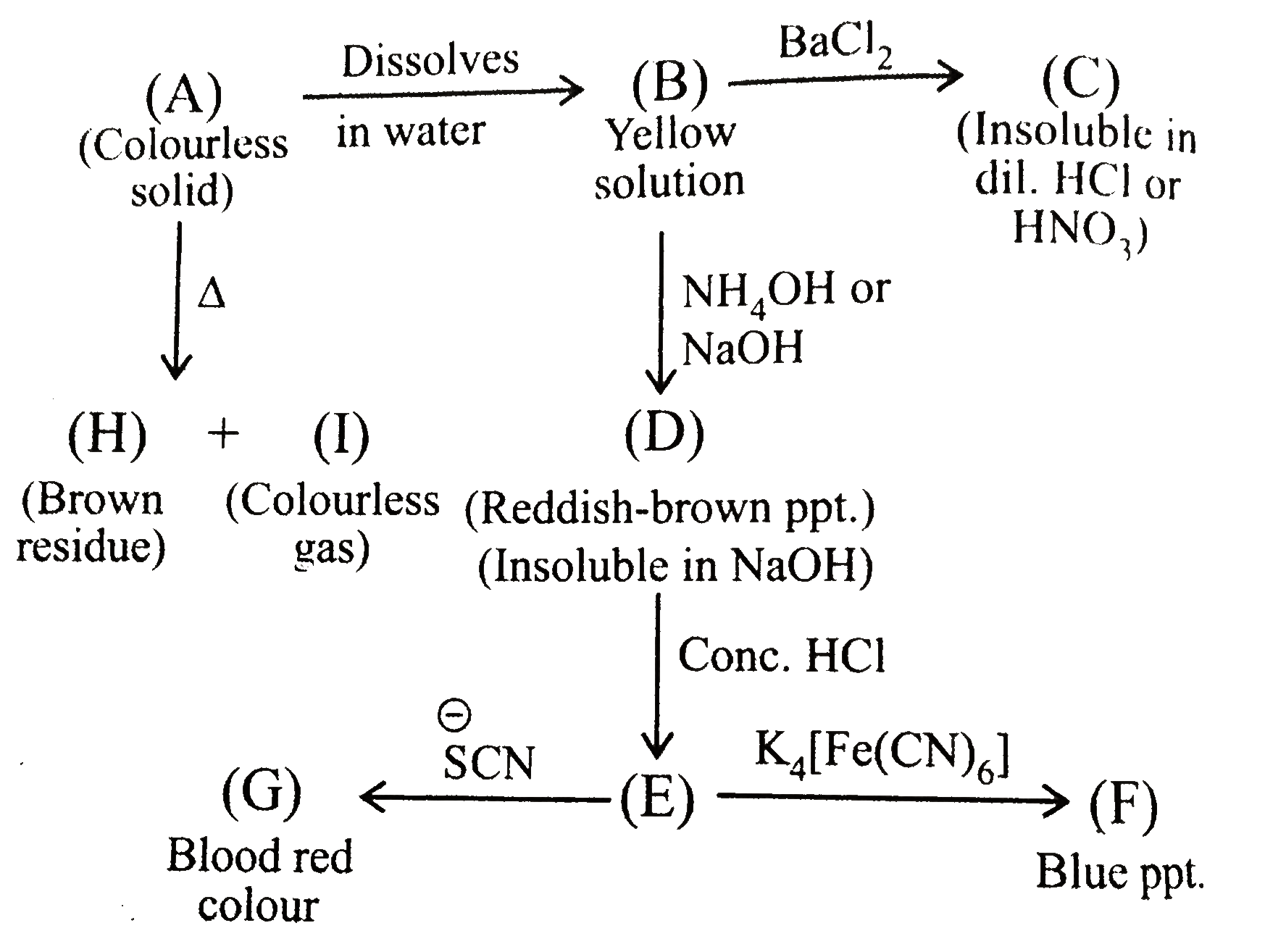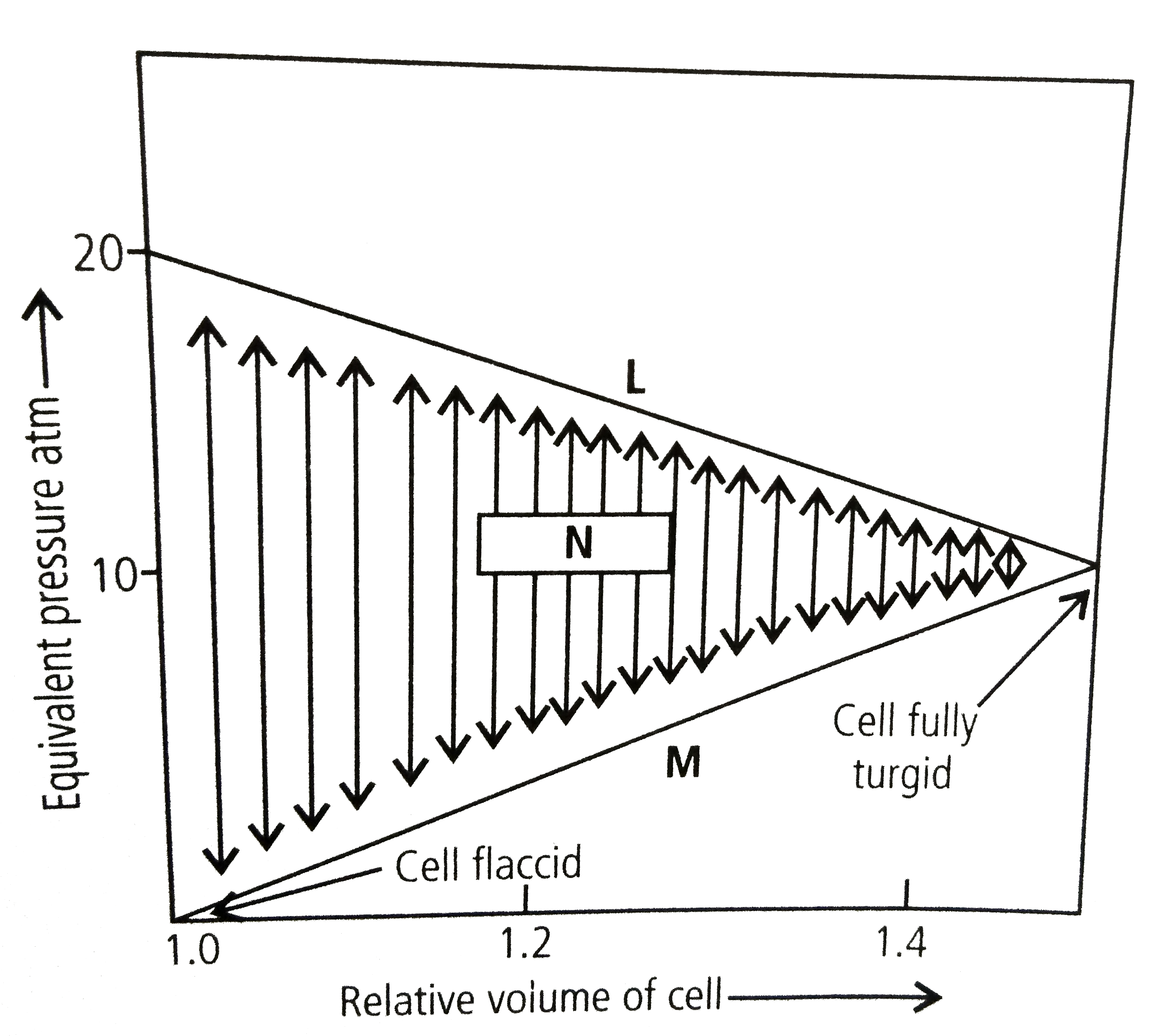Identify A to L

Text Solution
The correct Answer is:A: Fe2(SO4)3 B: Fe2(SO4)3 solution C : BaSO4 D : Fe(OH)3 E: FeCI3 F : Fe2[Fe(CN)6]3 G: Fe(SCN)3 H : Fe2O3 I: SO3
|
Topper's Solved these Questions
- QUALITATIVE INORGANIC SALT ANALYSISBOOK - CENGAGE CHEMISTRYCHAPTER - QUALITATIVE INORGANIC SALT ANALYSISEXERCISE - Ex 8.2
79 Videos
- QUALITATIVE INORGANIC SALT ANALYSISBOOK - CENGAGE CHEMISTRYCHAPTER - QUALITATIVE INORGANIC SALT ANALYSISEXERCISE - Viva Voce Questions And Part-A (Analysis Of Anions)
30 Videos
- QUALITATIVE INORGANIC SALT ANALYSISBOOK - CENGAGE CHEMISTRYCHAPTER - QUALITATIVE INORGANIC SALT ANALYSISEXERCISE - Exercises Archives (Subjective)
34 Videos
- P-BLOCK GROUP 18 ELEMENTS - THE INERT GASESBOOK - CENGAGE CHEMISTRYCHAPTER - P-BLOCK GROUP 18 ELEMENTS - THE INERT GASESEXERCISE - Ex 5.1 (Objective)
14 Videos
- REDUCTION AND OXIDATION REACTION OF ORGANIC COMPOUNDSBOOK - CENGAGE CHEMISTRYCHAPTER - REDUCTION AND OXIDATION REACTION OF ORGANIC COMPOUNDSEXERCISE - SUBJECTIVE TYPE
3 Videos
Similar Questions
Knowledge Check
Given diagram illustrates the changes that occur when a plant cell takes up water Identify L,Mand N and select the incorrect statement the given diagram
 AN is the diffusion pressure deficit which becomes zero when LandM re equal in magnitude.BIn a flaccid cell value of N becomes equal to that of LCMrepresents osmotic pressure which increases when a flaccid cell takes up water.DL represents solute potential which decreases with the increase in turgidity of the cell .
AN is the diffusion pressure deficit which becomes zero when LandM re equal in magnitude.BIn a flaccid cell value of N becomes equal to that of LCMrepresents osmotic pressure which increases when a flaccid cell takes up water.DL represents solute potential which decreases with the increase in turgidity of the cell .Given diagram illustrates the changes that occur when a plant cell takes up water Identify L,Mand N and select the incorrect statement the given diagram
 AN is the diffusion pressure deficit which becomes zero when LandM re equal in magnitude.BIn a flaccid cell value of N becomes equal to that of LCMrepresents osmotic pressure which increases when a flaccid cell takes up water.DL represents solute potential which decreases with the increase in turgidity of the cell .
AN is the diffusion pressure deficit which becomes zero when LandM re equal in magnitude.BIn a flaccid cell value of N becomes equal to that of LCMrepresents osmotic pressure which increases when a flaccid cell takes up water.DL represents solute potential which decreases with the increase in turgidity of the cell .Identify each of the following as either D− or L− glyceraldehyde.
 A(i)−L, (ii)−D, (iii)−DB(i)−D, (ii)−L, (iii)−DC(i)−D, (ii)−L, (iii)−LD(i)−L, (ii)−D, (iii)−D
A(i)−L, (ii)−D, (iii)−DB(i)−D, (ii)−L, (iii)−DC(i)−D, (ii)−L, (iii)−LD(i)−L, (ii)−D, (iii)−D
Identify each of the following as either D- or L- glyceraldehyde.

View SolutionIdentify the atomic numbers of the pair of elements which possesses same number of electrons in L and M shells.
View SolutionIdentify the atomic numbers of the pair of elements which possesses same number of electrons in L and M shells.
View SolutionIdentify the atomic numbers of the pair of elements which possesses same number of electrons in L and M shells.
View SolutionIdentify the atomic numbers of the pair of elements which possesses same number of electrons in L and M shells.
View Solution


